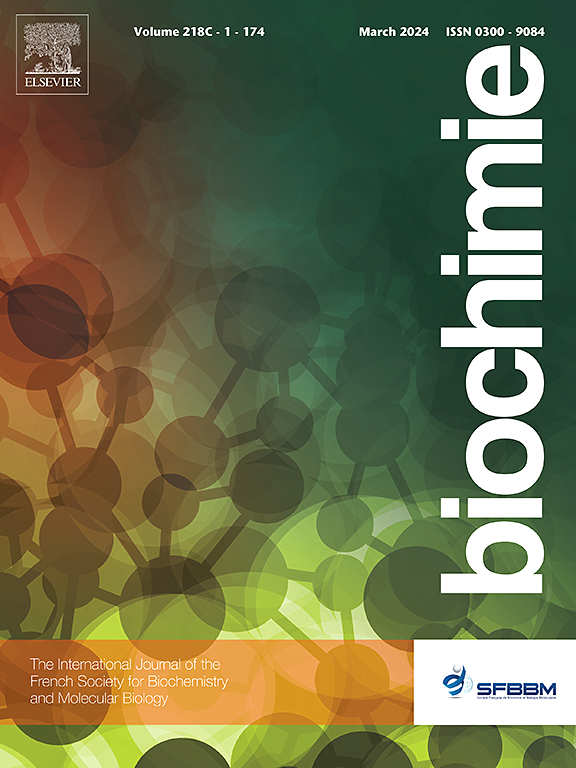In vitro and in vivo evidence of the antineoplastic activity of quercetin against endothelial cells transformed by Kaposi's sarcoma-associated herpesvirus G protein-coupled receptor
IF 3.3
3区 生物学
Q2 BIOCHEMISTRY & MOLECULAR BIOLOGY
引用次数: 0
Abstract
Quercetin (QUE) is a natural flavonoid with well-known anticancer capabilities, although its effect on viral-induced cancers is less studied. Kaposi's sarcoma (KS) is a viral cancer caused by the human herpesvirus-8, which, during its lytic phase, expresses a constitutively activated viral G protein-coupled receptor (vGPCR) able to induce oncogenic modifications that lead to tumor development. The aim of this work was to investigate the potential effect of QUE on in vitro and in vivo models of Kaposi's sarcoma, developed by transforming endothelial cells with the vGPCR of Kaposi's sarcoma-associated herpesvirus. Initially, the antiproliferative effect of QUE was determined in endothelial cells stably expressing the vGPCR (vGPCR cells), with an IC50 of 30 μM. Additionally, QUE provoked a decrease in vGPCR cell viability, interfered with the cell cycle progression, and induced apoptosis, as revealed by annexin V/PI analysis and caspase-3 activity. The presence of apoptotic bodies and disorganized actin filaments was observed by SEM and phalloidin staining. Furthermore, tumors from vGPCR cells were induced in nude mice, which were treated with QUE (50 or 100 mg/kg/d) resulting in retarded tumor progression and reduced tumor weight. Notably, neither kidney nor liver damage was observed, as indicated by biochemical parameters in serum. In conclusion, this study suggests for the first time that QUE exhibits antineoplastic activity in both in vitro and in vivo models of KS, marking a starting point for further investigations and protocols for therapeutic purpose.

槲皮素对由卡波西肉瘤相关疱疹病毒 G 蛋白偶联受体转化的内皮细胞具有抗肿瘤活性的体外和体内证据。
槲皮素(QUE)是一种天然黄酮类化合物,具有众所周知的抗癌功能,但其对病毒诱导的癌症的影响研究较少。卡波西肉瘤(KS)是一种由人类疱疹病毒-8 引起的病毒性癌症,这种病毒在其溶解阶段表达一种组成性激活的病毒 G 蛋白偶联受体(vGPCR),能够诱导致癌修饰,从而导致肿瘤的发展。这项工作的目的是研究 QUE 对卡波济氏肉瘤体外和体内模型的潜在影响,卡波济氏肉瘤相关疱疹病毒的 vGPCR 可转化内皮细胞。首先,在稳定表达 vGPCR 的内皮细胞(vGPCR 细胞)中确定了 QUE 的抗增殖作用,IC50 为 30 μM。此外,QUE 还降低了 vGPCR 细胞的存活率,干扰了细胞周期的进展,并诱导了细胞凋亡,Annexin V/PI 分析和 caspase-3 活性显示了这一点。通过扫描电子显微镜(SEM)和类胶原蛋白染色,可以观察到凋亡体和杂乱无章的肌动蛋白丝的存在。此外,用 vGPCR 细胞诱导裸鼠生长肿瘤,并用 QUE(50 或 100 mg/kg/d)治疗,结果肿瘤进展缓慢,肿瘤重量减轻。值得注意的是,从血清中的生化指标来看,没有观察到肾脏或肝脏受损。总之,这项研究首次表明 QUE 在 KS 的体外和体内模型中都具有抗肿瘤活性,为进一步研究和治疗方案提供了起点。
本文章由计算机程序翻译,如有差异,请以英文原文为准。
求助全文
约1分钟内获得全文
求助全文
来源期刊

Biochimie
生物-生化与分子生物学
CiteScore
7.20
自引率
2.60%
发文量
219
审稿时长
40 days
期刊介绍:
Biochimie publishes original research articles, short communications, review articles, graphical reviews, mini-reviews, and hypotheses in the broad areas of biology, including biochemistry, enzymology, molecular and cell biology, metabolic regulation, genetics, immunology, microbiology, structural biology, genomics, proteomics, and molecular mechanisms of disease. Biochimie publishes exclusively in English.
Articles are subject to peer review, and must satisfy the requirements of originality, high scientific integrity and general interest to a broad range of readers. Submissions that are judged to be of sound scientific and technical quality but do not fully satisfy the requirements for publication in Biochimie may benefit from a transfer service to a more suitable journal within the same subject area.
 求助内容:
求助内容: 应助结果提醒方式:
应助结果提醒方式:


